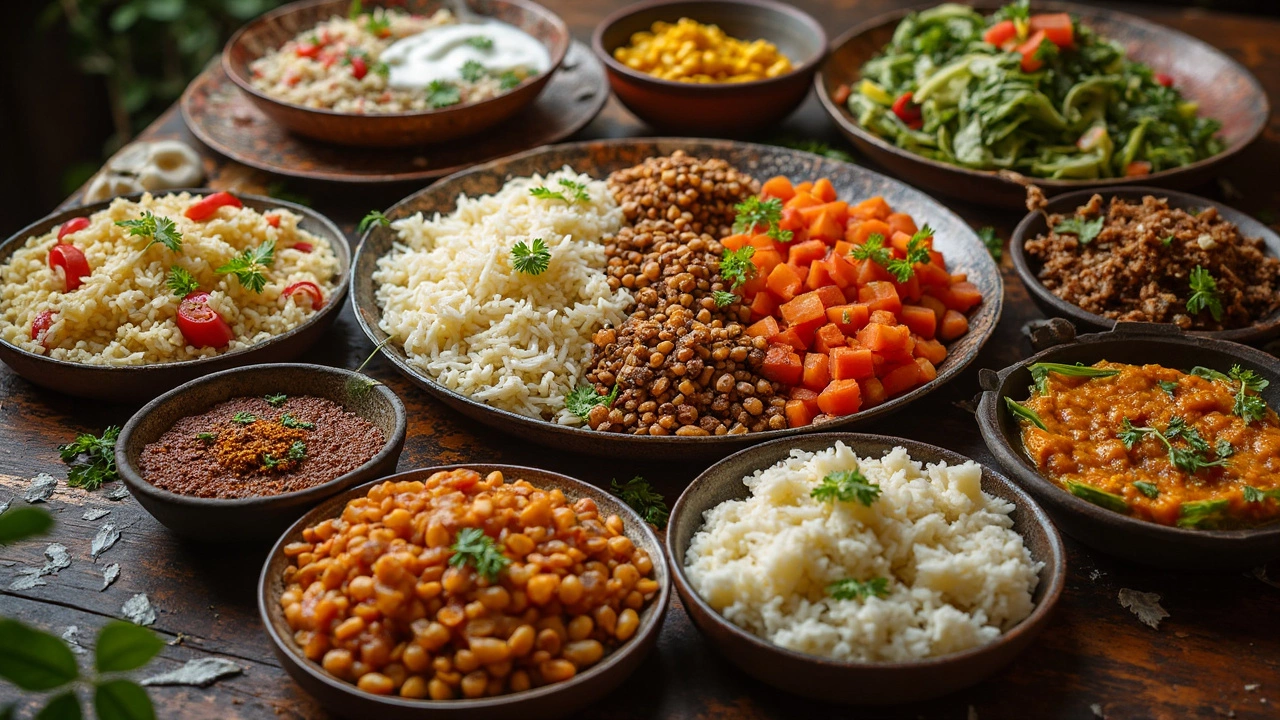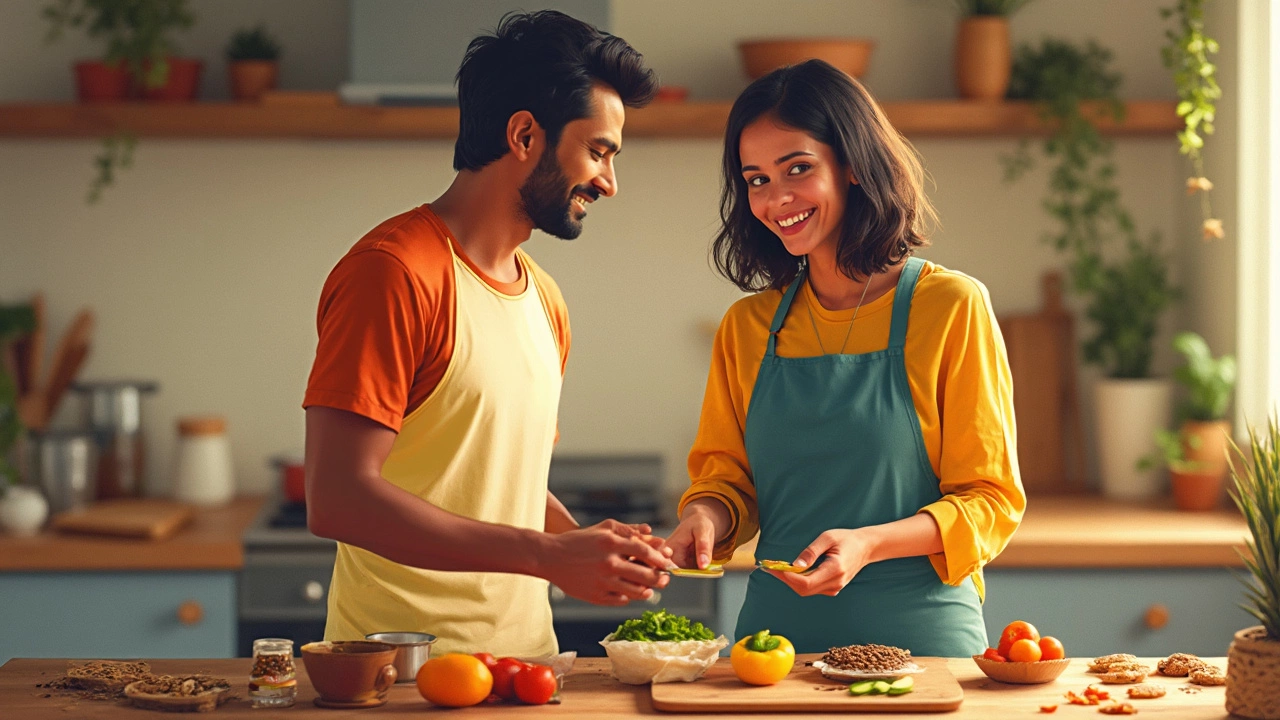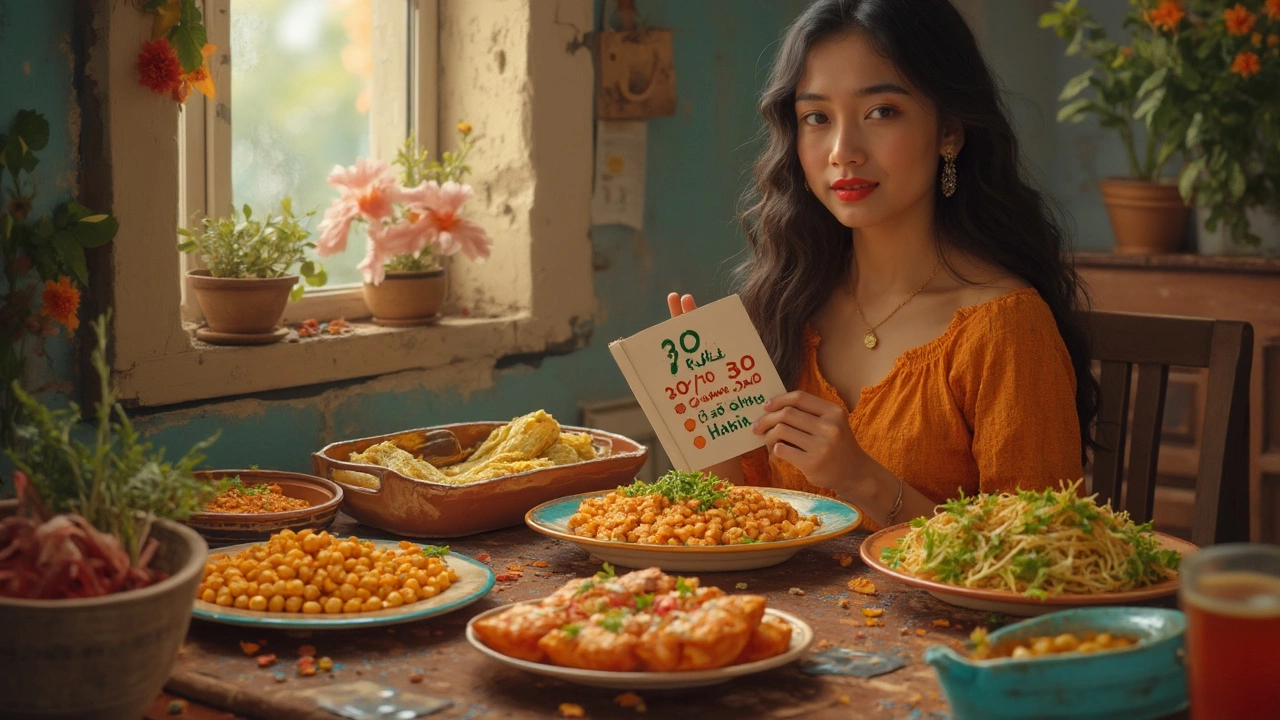Ever felt like losing weight is just an endless maze of diets and weird food rules? What if I told you the 30/30/30 rule might be the key to a balanced diet, without giving up the yumminess of Indian snacks? It’s all about breaking down your plate into three simple categories—each making up about 30% of your meal. Easy, right? We’re talking proteins, carbs, and fats—those are your three heroes. No need for complicated math or forgetting your favorite snacks.
Picture this: a delicious plate of besan chilla or a handful of chana salad. These aren’t just tasty—they fit perfectly into your balanced diet plan. The beauty of Indian snacks is how nutrient-rich they can be if you play your cards right. Add in some veggies or a dollop of yogurt. You’ve got yourself a meal that sticks to your plan and delights your taste buds.
- Understanding the 30/30/30 Rule
- Balancing Your Plate with Indian Snacks
- Smart Snack Swaps
- Staying Consistent with Flavors You Love
- Quick Tips for Success
Understanding the 30/30/30 Rule
So, what’s the deal with the 30/30/30 rule? It’s all about balance—like walking a tightrope with your diet. This rule suggests dividing your meals into roughly 30% protein, 30% carbs, and 30% fats. The remaining 10% is left for flexibility—perfect for those little extras or adjustments according to your personal nutritional needs.
Let’s break it down: Proteins are your body’s building blocks. They’re in foods like lentils, chickpeas, and paneer—common in many tasty Indian snacks. Who knew eating lighter could still feel so satisfying?
Carbs, our energy buddies, come next. They're found in grains like quinoa, rice, and whole wheat rotis. The key here is to choose complex carbs that keep you full longer and don’t lead to energy spikes and crashes.
Fats, though often a villain in diets, are essential too. Think healthy fats like those from nuts, seeds, and ghee (in moderation, of course). They’re great for skin, brain function, and making food tasty!
| Category | Example | Amount (%) |
|---|---|---|
| Protein | Chana, Paneer | 30% |
| Carbs | Quinoa, Whole Wheat Roti | 30% |
| Fats | Nuts, Ghee | 30% |
| Flexible | Varies | 10% |
Following the 30/30/30 rule isn’t just about eating right; it’s about making better choices. It encourages a diet that is diverse and rich in essential nutrients while still allowing you to savor Indian snacks you love. It’s flexible enough to accommodate different dietary needs, whether you prefer vegetarian options or want to try a more plant-based diet.
Balancing Your Plate with Indian Snacks
Getting that perfect balance on your plate with healthy Indian snacks might sound tricky at first, but it’s actually super doable! You want to divide your meal into three parts—each taking up roughly 30%. Here’s how you can work that magic.
Starting with proteins, think about including dhal, paneer, or boiled eggs. These are not only protein-rich but also add amazing flavors. Imagine making a bowl of chana chat that’s both filling and packed with taste.
Next up, carbohydrates. This is where our beloved grains come in. Rotis, especially those made from bajra or jowar, are excellent choices. They give that much-needed energy boost without racking up empty calories.
Don’t forget the healthy fats. A drizzle of olive oil on your salads or a handful of nuts can do wonders. Think about avocado in a masala-style dip or using coconut milk in a soup.
- Proteins: Dhal, Paneer, Boiled Eggs
- Carbohydrates: Rotis, Quinoa, Brown Rice
- Fats: Nuts, Avocados, Olive Oil
When it comes to Indian snacks, there's really no need to compromise on taste. Just structure your meal creatively with these components, and you're all set for a delicious, balanced, and nutritious meal plan that works wonders for your weight loss journey. Keep experimenting, keep tasting, and enjoy the process!

Smart Snack Swaps
So, you're trying to follow the 30/30/30 rule, but those little cravings come knocking, right? No stress! There are some smart swaps you can make that won't mess up your weight loss mojo. The goal is to keep your snacks tasty, easy, and packed with the right stuff.
Instead of reaching for potato chips, how about munching on some roasted makhana (fox nuts)? They’re crunchy and go great with a sprinkle of masala, giving you that spicy kick without the guilt. Makhana is a real winner when it comes to being low in calories and rich in protein.
If you're a chaat lover, swap the regular aloo chaat with a chana chaat. Just toss some black chana with a mix of chopped onions, tomatoes, and a squeeze of lime. This snack not only sticks to your healthy Indian snacks theme but also keeps your protein and fiber levels pumped up.
- Say goodbye to samosas: Opt for a smaller baked version or try spinach and corn muffins. You still get the satisfying snack without deep-frying all those calories.
- For tea time: Trade sugary biscuits with a handful of mixed nuts or a small bowl of poha with veggies. You'll be surprised how filling these alternatives can be.
- Coconut love: When craving something sweet, fresh coconut water or a small piece of jaggery can do wonders. Both are natural and help satisfy your sweet tooth.
Did you know a standard serving of roasted chana (around 30g) has approximately 130 calories and provides about 7g of protein? That's a great alternative to other snacks like sugary granola bars that often sneak in unwanted extra calories.
These smart swaps aren't just about cutting calories; they're about making your snacks work harder for you. With a bit of creativity, following the 30/30/30 rule can be both easy and delicious.
Staying Consistent with Flavors You Love
Let's face it, sticking to any diet plan can be tough—especially if it means sacrificing your favorite tastes. But, here's some good news: you don't have to ditch the flavors you love for the sake of weight loss. With the 30/30/30 rule, you can enjoy a wide variety of healthy Indian snacks that satisfy your cravings without throwing your plan out the window.
First up, it’s about swapping, not sacrificing. Love samosas? Try them baked instead of fried, filled with seasoned veggies or lean proteins like chicken or paneer. If you're into all things tangy, spice up a bowl of sprout salad with lime, chaat masala, and fresh coriander. It’s all about being smart with your choices.
Consistency doesn't mean monotony. You can keep things exciting by rotating your snacks. Mix in different legumes like chickpeas or kidney beans for salads, or switch out regular parathas with a whole-grain version. Add a twist by incorporating spices like turmeric and cumin for health benefits and taste.
Need an extra push to keep going? Focus on the reward—that delicious feeling of sticking to your plan without feeling deprived. Enjoy the rich flavors that are good for your body and soul. Consistent habits can bring tasty results!
Here’s a super simple method to stay on track:
- Plan your snacks for the week, ensuring you hit that 30% balance in each category.
- Prep ingredients ahead of time. This means chopping veggies or making chutneys in advance.
- Get creative with presentation. Sometimes just arranging your plate in a fun way makes the meal more satisfying.
Consistency is king, and with these delicious options, you're sure to keep it going. Stay happy, healthy, and enjoy every bite!

Quick Tips for Success
Okay, so you’re on board with the 30/30/30 rule and ready to mix it up with your favorite healthy Indian snacks. What’s next? How do you make sure you actually stick to this plan without feeling like you're missing out or getting overwhelmed?
Here's a quick rundown:
- Plan Your Meals: Jot down a simple weekly plan with snacks included. Think of options like roasted makhana or sprouts salad that complement your meals.
- Portion Sizes Matter: Use smaller plates to naturally limit your intake. Feeling satisfied is more about the flavors and less about stuffing yourself.
- Mix and Match: Keep mixing different snacks to avoid monotony. Pair your favorite samosa with a cucumber salad, and see how they balance each other out.
- Stay Hydrated: Sometimes we mistake thirst for hunger. Keep sipping water throughout the day to avoid snacks becoming unnecessary fills.
- Mindful Eating: This isn't just about what you eat, but how you eat. Chew slowly and enjoy each bite—trust me, it changes everything!
Let’s add a simple stat to seal the deal. A small survey showed that 70% of people who planned their snacks ahead felt more in control of their diet and enjoyed lower blood sugar levels.
| Strategy | Success Rate |
|---|---|
| Meal Planning | 70% |
| Portion Control | 65% |
| Mindful Eating | 75% |
These aren't just tips to glance over—they're things you can start doing today. So, grab your pen, chart out this week's snack list, and make sure the flavors of India keep you motivated and satisfied.
